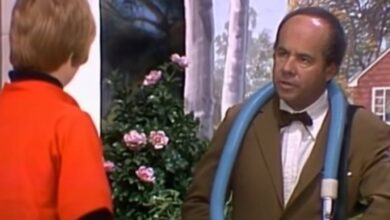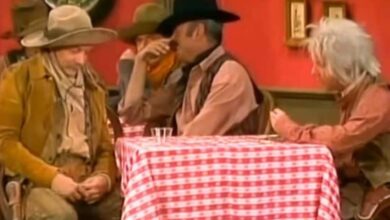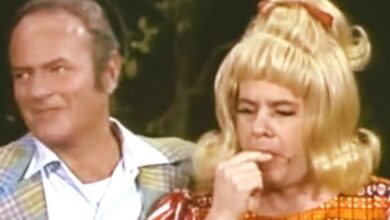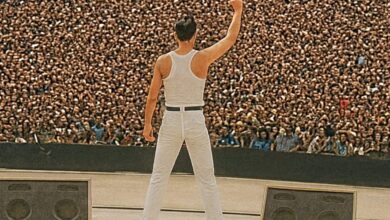Jim Croce’s ‘Time in a Bottle’ Becomes a Posthumous Anthem of Love and Reflection in 1973
When “Time in a Bottle” was released in 1973, it quickly became a deeply moving anthem that touched the hearts of millions. Written and performed by Jim Croce, the song took on an even more poignant meaning following his untimely death. Its soft, reflective melody and poetic lyrics about the fleeting nature of time and love resonated with a grieving public, propelling the song to the top of the charts as a posthumous number-one hit.
Jim Croce was born in 1943 in South Philadelphia and developed a passion for music from a young age. Known for his heartfelt songwriting and expressive vocals, Croce had a talent for transforming everyday experiences into universal messages. Before achieving fame, he worked various blue-collar jobs and performed in small venues, building a loyal following with songs that reflected both humor and deep emotional insight.
“Time in a Bottle” was born from an intensely personal moment in December 1970. Upon learning that his wife Ingrid was pregnant with their first child, Croce sat down and wrote the song in one sitting. The lyrics are a gentle meditation on the desire to preserve precious moments and protect the ones we love from the inevitability of time. It was a private message turned public elegy, capturing a shared human longing with striking simplicity.
The recording of the song took place in 1972 and was marked by a minimalist and hauntingly beautiful arrangement. Croce’s delicate acoustic guitar work is supported by the ethereal harpsichord played by his longtime collaborator, Maury Muehleisen. This understated production style gave the song a timeless quality, allowing the emotion in Croce’s voice to remain front and center. The sparseness of the instrumentation emphasized the vulnerability embedded in every line.
Initially released as an album track on *You Don’t Mess Around with Jim*, “Time in a Bottle” was not singled out for radio airplay. That changed after Croce’s tragic death in a plane crash on September 20, 1973. In the wake of the tragedy, radio stations began playing the song heavily, and its heartfelt lyrics took on new weight. Responding to public demand, the song was released as a single and climbed to the number-one position on the Billboard Hot 100 by the end of that year.
The emotional response to the track was overwhelming. It became a rare example of a song achieving mainstream success after the artist’s passing, a testament to how deeply it spoke to listeners. Its chart-topping status underscored the public’s connection to Croce’s message and helped solidify his place as one of the most sincere voices in American music. “Time in a Bottle” quickly came to symbolize not only lost time but also the fragility of life itself.
The song’s resurgence brought renewed interest in Croce’s earlier recordings and introduced his music to a wider audience. Albums that once went underappreciated suddenly saw a surge in sales, and his influence began to stretch across musical boundaries. His legacy was now attached to a body of work defined by sincerity, vulnerability, and poetic honesty, qualities that would inspire countless singer-songwriters for years to come.
“Time in a Bottle” has since been reimagined by artists from a wide range of genres, each seeking to capture the emotional essence of the original. Covers by musicians such as Lykke Li brought a modern, dreamlike quality, while actor Ken Jeong’s heartfelt tribute version introduced it to a new generation. These renditions, while diverse in style, remained faithful to the song’s central theme: the deep human wish to pause time and hold on to what we love.
The emotional weight of the song was magnified by Croce’s rising success at the time of his death. With hits like “Bad, Bad Leroy Brown” already climbing the charts, Croce was on the verge of becoming one of the most celebrated artists of the decade. “Time in a Bottle” became a bittersweet reminder of the promise that was lost and the artistry that had just begun to blossom before fate intervened.
Over the decades, the song has never faded from public memory. It continues to feature in films, television shows, and radio playlists, often used to underscore moments of reflection, nostalgia, or emotional transition. It has been consistently included in lists of the greatest songs of all time and is often cited as one of the finest examples of posthumous releases in music history.
The track’s influence has extended beyond its initial release, shaping the stylistic choices of many singer-songwriters who followed. Its delicate acoustic arrangement and confessional lyrics became hallmarks for those seeking to connect emotionally with listeners. It proved that songs about vulnerability and time could be both commercially successful and artistically profound, challenging the industry’s notions of what made a hit.
Its continued presence in popular culture has helped preserve Jim Croce’s place in the musical canon. The song has become a staple at weddings, memorials, and quiet moments of introspection, its message still ringing true. Through these appearances, “Time in a Bottle” has found new life in each generation, further solidifying its legacy as a universally resonant piece of songwriting.
There’s a quiet power in “Time in a Bottle” that few songs can match. It speaks to the fundamental desire to capture life’s most meaningful moments and the regret of not having enough time. Croce’s delivery, marked by both tenderness and sorrow, continues to move listeners, reminding us all to treasure the present while we have it.
Jim Croce’s legacy endures through this song more than any other. “Time in a Bottle” is more than a recording—it is a meditation on time, memory, and the bonds of love. As it continues to echo through time, it stands as a lasting tribute to an artist who, though taken too soon, left behind a message that still touches hearts around the world.





